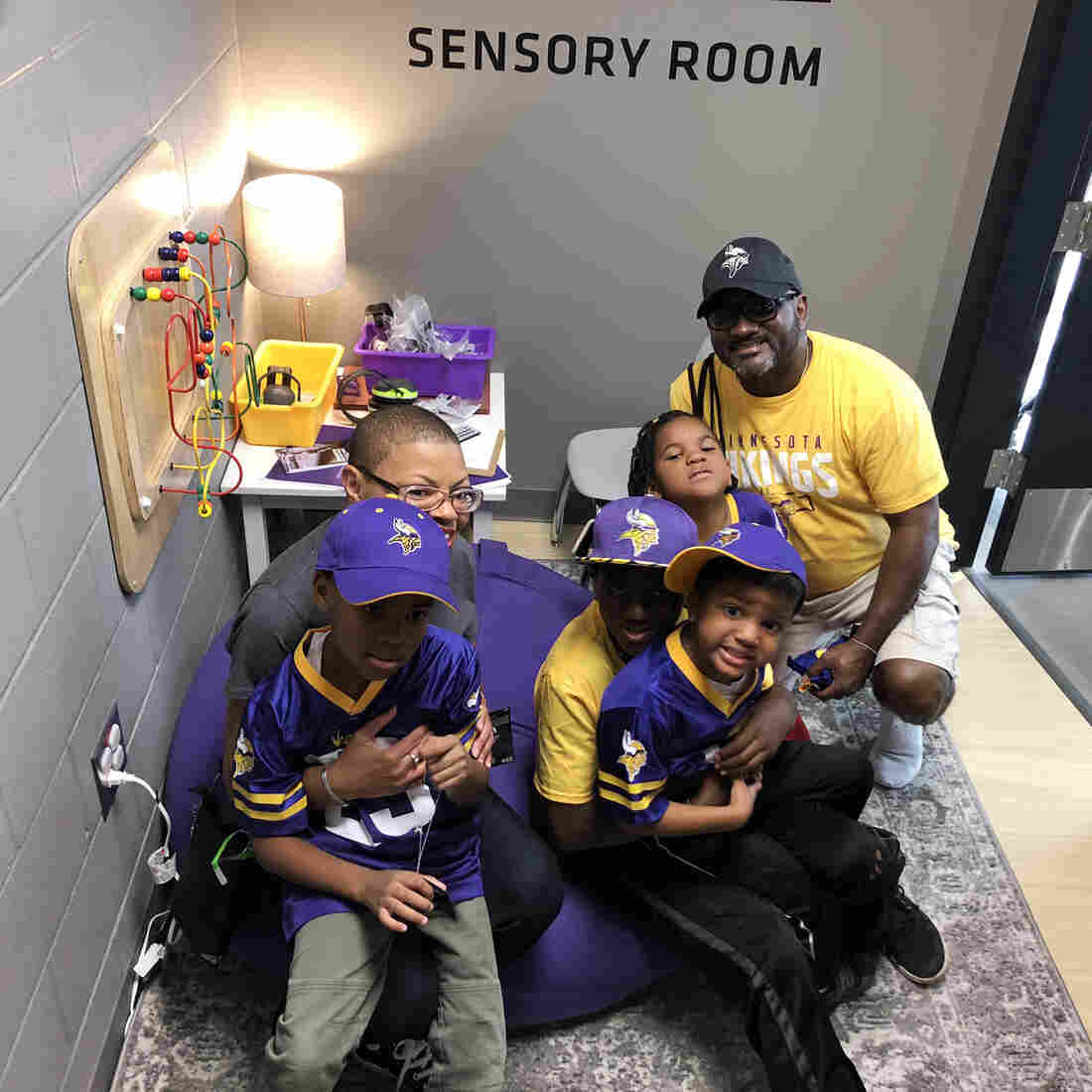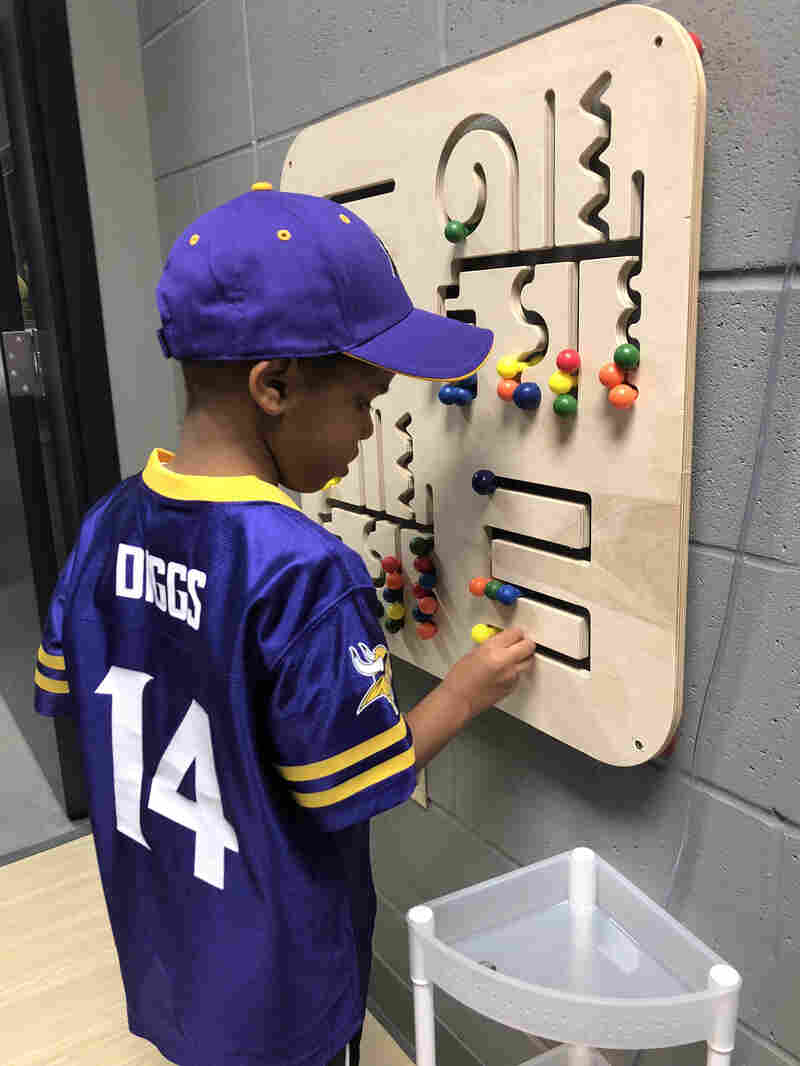Wilbur Ross At The Center Of Another Political Storm, This Time About The Weather

Commerce Secretary Wilbur Ross is under the microscope for reportedly pressuring government scientists to back President Trump over a misleading tweet about Hurricane Dorian.
Win McNamee/Getty Images
hide caption
toggle caption
Win McNamee/Getty Images
Commerce Secretary Wilbur Ross is under the microscope again, amid fresh allegations of meddling with a government scientific agency.
The latest storm to engulf the secretary began Sept. 1, when weather forecasters in Birmingham, Ala., issued a tweet saying Hurricane Dorian posed no threat to their state.
“We were reacting to the calls that were coming into our office, and people were actually frightened,” said Kevin Laws, science officer for the National Weather Service in Birmingham. “They were wanting to cancel surgeries, and they were wanting to go pick up elderly parents at the coastline because they were genuinely scared. And we felt like we needed to make a statement on where this storm was going to go and to reassure our people.”
Laws and his colleagues learned only later what sparked those anxious phone calls: a tweet from President Trump, mistakenly including Alabama on a list of states that could be hard hit by the storm.
For days, Trump stubbornly insisted he was right about the hurricane’s path, giving fodder to late-night comics when he showed off a map that had been clumsily doctored with a Sharpie. But the story took a more serious turn last Friday when the National Oceanic and Atmospheric Administration — the federal agency that includes the National Weather Service — issued an unsigned statement defending the president’s tweet and chastising the Birmingham forecasters who contradicted it.
According to The New York Times, NOAA’s statement followed political pressure from the commerce secretary, who oversees the weather agency and threatened to fire NOAA officials if they failed to back up the president.
“This is the straw that broke the camel’s back,” said Rep. Don Beyer, D-Va., who called for Ross to resign. “Threatening to fire senior NOAA appointees if they didn’t prop up Trump’s false weather claims? It’s just one bridge too far.”
A Commerce Department spokesman denied the Times report, saying Ross didn’t threaten to fire anyone over the dueling hurricane statements.
“Secretary Ross has never stopped advocating for the American people,” the spokesman said in a statement.
But the episode has brought renewed attention to Ross’ history of interfering with government scientists.
“It’s part of a pattern of deemphasizing science and facts and the truth in order to play some often naive or silly political agenda,” said Beyer, who serves on the House Committee on Science, Space and Technology. The committee’s chairwoman, Rep. Eddie Bernice Johnson, D-Texas, endorsed an investigation of the NOAA statement by the Commerce Department’s inspector general.
Ross, who also oversees the Census Bureau, previously bucked scientific experts there when he tried to include a citizenship question on the 2020 census, despite warnings that it would jeopardize an accurate head count.
“It certainly introduces uncertainties about the scientific integrity of our national statistics when you see political interference with the mission of these agencies,” said John Thompson, who directed the bureau from 2013 to 2017.
The Supreme Court ultimately blocked the citizenship question. In his ruling, Chief Justice John Roberts suggested that the question would have been allowed if Ross had not misrepresented his motives. Ross claimed he was acting on a request from the Justice Department, but Roberts concluded that this was a mere pretext.
The Trump administration has also been quietly purging information about climate change from government websites and replacing independent scientific advisers with industry insiders. Complaints about the scientific integrity of government agencies can often seem esoteric. But a battle over the National Weather Service helps bring it home.
“Everyone knows their local TV meteorologist and understands that they get information directly from the government,” said Michael Halpern of the Union of Concerned Scientists. “The air pollution scientists who work for EPA are a little bit more behind the scenes, but their work is just as critical to protecting the public.”
Ross hasn’t tried to skew only government measurements. He has also tried to skew measures of his own wealth. For years, Forbes magazine included Ross on its list of the richest Americans, estimating his fortune at $2.9 billion in 2016. But once he joined the administration, financial disclosures revealed Ross was really worth only a fraction of that.
“We estimate that he is worth about $600 million,” said Forbes senior editor Dan Alexander. “And what’s sad — somebody who has been so successful and is so wealthy, still for him it wasn’t enough. He wanted to be seen as richer. [He] wanted people to think he was a billionaire, and he just never was.”
In a 2017 story about Ross’ exaggerated claims of wealth, Alexander quoted longtime co-workers about the secretary’s habit of bending the truth.
“At this point, people just don’t trust him,” Alexander said Tuesday, as the NOAA controversy was making headlines. “So it wasn’t that much of a surprise to see that Wilbur was apparently helping cover up for misinformation about that.”
By the time Dorian’s winds reached hurricane strength, Ross’ credibility was in danger, even if the people of Alabama were not.
Mary Scott Hodgin of member station WBHM contributed to this report.
NFL Season Kicks Off With Refuges For Fans With Sensory Needs To Take A Timeout

Sheletta and Shawn Brundidge, alongside their four children, were the first fans to use the sensory room at the Minnesota Vikings’ U.S. Bank Stadium. Opened during the August pre-season, the space comes with trained therapists and provides fans, including those with autism, a break from the excitement of the game.
Tami Hedrick/Minnesota Vikings
hide caption
toggle caption
Tami Hedrick/Minnesota Vikings
The roar of the crowd, the boom of the sound system, the flash of fireworks — all part of the thrill for many fans who flock to NFL games, but for others, including those on the autism spectrum with sensory issues, the experience can be too much.
Now a growing number of teams are including “sensory inclusive spaces” within their arenas to accommodate them.
The Philadelphia Eagles, the Seattle Seahawks and the Minnesota Vikings have all opened rooms that provide a refuge for those who need to step away from the clamor. The spaces come equipped with dim lighting, sound-protected walls and sensory activities, including toys and games, with the goal of providing a reset.
And Julian Maha, co-founder of KultureCity, the nonprofit that worked with the Vikings and the Eagles to design the rooms, told NPR that there are many people who may need that reset.
“One in six people in the U.S. have a sensory need,” said Maha, who is also a medical doctor. That can include individuals not only with autism, but also Down syndrome, post-traumatic stress disorder and dementia; all challenges that Maha said may not be visibly apparent but come with “a freedom barrier.”
“The lights, the noises, the crowd can be not only overwhelming from a sensory aspect but also physically painful to them,” he said.
Valerie Paradiz, vice president of services and supports at Autism Speaks, who was diagnosed with autism as an adult, told NPR that for people on the autism spectrum, public sports events can be especially difficult to process. “By creating a calm space, these NFL stadiums encourage inclusion and enable people with autism, their families and friends to attend events together,” she said in an email.
Tami Hedrick, the Vikings’ director of women’s initiatives, worked to create the sensory inclusive space at U.S. Bank Stadium in Minneapolis.
She told NPR that the Brundidge family — whose three out of four children have been diagnosed with autism-spectrum disorders — were the first people to use the room when it opened during the August preseason. Hedrick said the room was a game changer for the family, as they would have been unable to attend without it.
A child enjoys the sensory inclusive space at U.S. Bank Stadium during the Minnesota Vikings’ August pre-season.
Tami Hedrick/Minnesota Vikings
hide caption
toggle caption
Tami Hedrick/Minnesota Vikings
The room comes with two trained therapists and has so far averaged around 15 people per game, Hedrick said. Attendance is capped at four people at a time, and they are asked to stay for no longer than twenty minutes, although accommodations could be made as needed.
“We want to be able to have that privacy and to have that quiet,” he said. “All of them were only in there for about five minutes. They didn’t really need a lot more time.”
Several arenas, including the Denver Broncos’ Mile High Stadium, the New York Giants and Jets’ MetLife Stadium and the Pittsburgh Steelers’ Heinz Field, are also accommodating fans with special needs by offering tool kits with noise-cancelling headphones and sensory toys — known as fidget tools.
The kits come with a badge letting staff know that a fan can leave the arena and come back in.
KultureCity works with franchises to train staff to recognize what sensory needs look like. The training, Maha said, includes “the awareness and freedom you’re giving to this population to come into your facility without fear of judgement.”
Maha knows the feeling. His 11-year-old son was diagnosed with autism and is non-speaking.
He also adores basketball.
At one time, the family only got to enjoy a few minutes of an Atlanta Hawks’ game before having to leave. Now several NBA teams have added sensory rooms to their arenas, including the Hawks. Now, Maha said, his son can stick it out for an entire game, occasionally using the sensory room — and the kit — to decompress.
“It’s been transformative,” Maha said. “At the core, it gives families and individuals the freedom to re-engage with communities again.”

